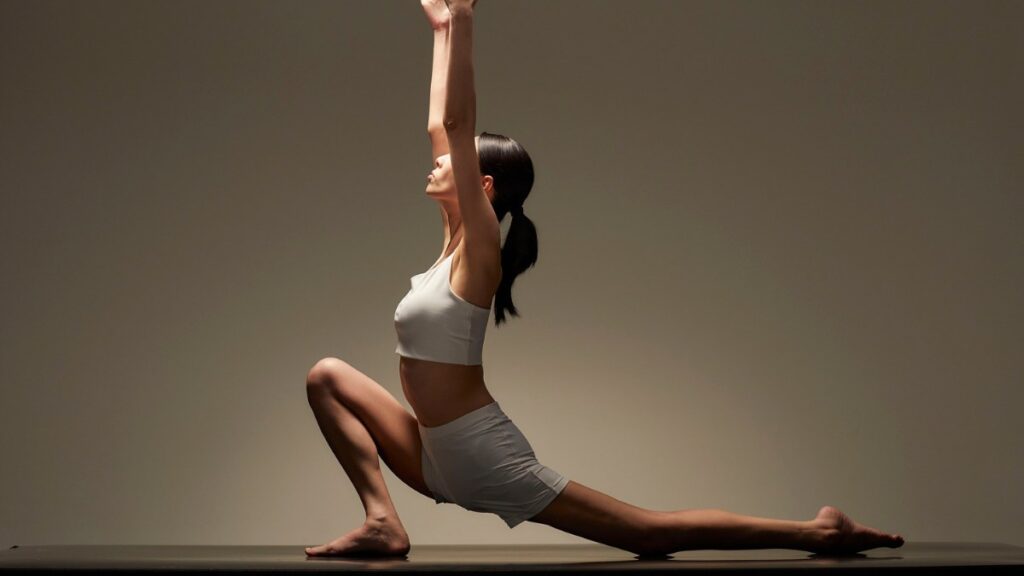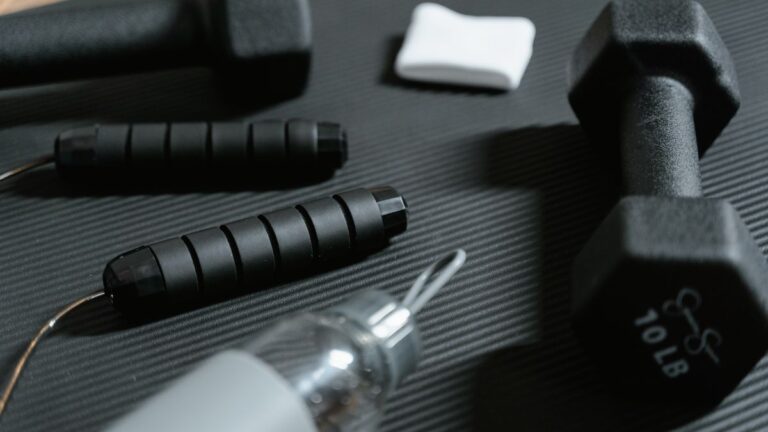Yoga Poses For Thyroid Function Support – A Wellness Guide!

Last Updated on July 27, 2025
Feeling off—but can’t explain why?
Fatigue that lingers even after rest. Weight gain that doesn’t add up. Mood swings that come out of nowhere. These aren’t just random annoyances—they might be signs that your thyroid needs a little extra love.
This tiny butterfly-shaped gland in your neck controls how fast or slow everything runs in your body, from metabolism to mood. And when it’s out of balance, you feel it everywhere.
Now, here’s the thing: while medication and labs are essential when needed, there are some yoga poses for thyroid function support to try.
But not just any yoga. We’re talking about targeted, restorative, and energizing movements that work with your endocrine system, not against it.
Let’s break it down.
What’s Really Going On With Your Thyroid?
One tiny gland. So much chaos.
The thyroid doesn’t take up much space in your body, but its influence is massive.
Nestled just below your Adam’s apple, this little gland produces T3 (triiodothyronine) and T4 (thyroxine)—two hormones that impact your metabolism, energy levels, body temperature, brain function, and more.
So what happens when things go sideways?
Roughly 1 in 8 women will develop a thyroid disorder during their lifetime, according to the American Thyroid Association. That’s not rare.
Conditions like hypothyroidism (underactive thyroid) and hyperthyroidism (overactive thyroid) are increasingly common—often triggered by autoimmune conditions, stress, poor sleep, or hormonal imbalances.
But most people don’t realize their thyroid is involved. They just feel off.
Tired but wired. Cold hands and feet. Unexplained weight changes. Hair thinning. A racing heart when you’re just sitting still.
You might not connect these symptoms to your thyroid at first, and that’s normal. But here’s the empowering part: once you know the root, you can take steps to support it—and yoga is one of those steps.
Let’s talk about how that works.
Can Yoga Really Help Thyroid Function?
Let’s answer the big question.
Here’s what I get asked a lot as a wellness consultant: “Can yoga actually improve my thyroid function?”
Short answer? Not directly. Yoga doesn’t replace medication, but it can absolutely support thyroid health in a way that’s gentle, consistent, and powerful.
Let me explain.
The thyroid is part of the endocrine system, which works like a chain of command. When one gland gets overwhelmed, say from stress, the whole system can misfire.
Chronic stress alone can throw off the HPA axis (hypothalamus-pituitary-adrenal), suppress thyroid hormones, and increase cortisol, leading to sluggishness and inflammation.
This is where yoga enters the picture.
A study published in the Journal of Complementary and Integrative Medicine found that participants with hypothyroidism who practiced yoga saw improvements in fatigue levels and TSH balance over 6 months.
Another research piece pointed out that daily yoga can help regulate autonomic nervous system activity, which is tightly linked to hormone production.
So, no—it’s not magic. But it’s measurable.
Through specific poses and mindful breathing, yoga activates the parasympathetic nervous system—your body’s built-in rest and restore mode. That calm helps regulate hormonal feedback loops and improves the way your body processes signals to and from the thyroid.
What this really means is: yoga gives your thyroid the environment it needs to do its job more effectively.
Ready to see what that looks like in practice?
The Science Behind Yoga’s Impact On Hormonal Balance
This isn’t just woo.
You might be thinking: “Okay, so yoga reduces stress. But how does that connect to my thyroid?”
Here’s how.
Stress is one of the biggest disruptors of hormonal health. When your body is stuck in fight-or-flight mode, it cranks out cortisol—a stress hormone.
Over time, high cortisol levels can suppress thyroid hormone production, reduce the conversion of T4 to T3, and create a cycle of fatigue, brain fog, and imbalance.
Yoga interrupts that cycle.
Through breath-led movement, you activate the vagus nerve, which signals your brain to switch into calm mode. This slows your heart rate, lowers blood pressure, and reduces inflammation—key factors that help your thyroid function more smoothly.
It also does something else.
Certain yoga poses apply gentle pressure to the throat and neck area, stimulating circulation around the thyroid. This might sound subtle, but increased blood flow means better nutrient delivery, enhanced hormone feedback, and more efficient waste removal in that region.
We’re not guessing here—this has been shown in studies, including one published in Hormones journal, which noted that regular yoga could positively influence cortisol rhythms and support hormone regulation across the endocrine system.
So, when you practice yoga with intention—not just to burn calories—you’re creating conditions that promote hormonal harmony.
And that brings us to the real magic. The yoga poses themselves.
Best Yoga Poses For Thyroid Function Support

Let’s hit the mat with purpose.
If you’ve ever Googled “yoga for thyroid” and found lists of 10+ poses with no explanation—you’re not alone. The truth is, not all yoga is created equal when it comes to endocrine support.
What we want are poses that do one (or more) of the following:
- Stimulate blood flow to the thyroid gland
- Calm the nervous system
- Support hormonal regulation
- Encourage lymphatic drainage
Let’s break down each one. No gimmicks—just purpose.
1. Shoulder Stand (Sarvangasana)
The queen of thyroid poses.
Here’s the deal: shoulder stand isn’t just dramatic—it’s therapeutic when done right.
Why it matters ? This inversion brings fresh, oxygen-rich blood to the thyroid, stimulating its function through gentle compression.
It also boosts circulation in the neck, supports lymphatic drainage, and quiets the sympathetic nervous system—the one that goes into overdrive during stress.
This pose is especially helpful for hypothyroidism because it activates the parasympathetic system while nourishing the gland.
But let’s talk safety.
If you’re dealing with neck issues, glaucoma, or high blood pressure—skip it or do a supported version with bolsters. Always come out of the pose slowly and rest in fish pose (which we’ll cover next) for balance.
Hold for 30–60 seconds, breathing deeply. Repeat 2–3 times.
Your thyroid loves it. Your circulation loves it. Your nervous system? It’s sighing in relief.
2. Fish Pose (Matsyasana)
Open the throat. Restore the flow.
Think of this as a shoulder stand’s quieter, nurturing twin.
Fish pose is a gentle backbend that opens the throat, relieves tension around the cervical spine, and subtly massages the thyroid. It’s especially helpful when you feel stuck—mentally or energetically—and need to breathe deeper into your upper chest and neck.
What makes this pose stand out is its dual effect. It’s both stimulating and calming, activating the thyroid while anchoring the nervous system.
For people who’ve been in chronic “fight or flight”, this pose says: it’s safe to soften.
You can do it supported (with a yoga block or rolled towel under your shoulder blades) for longer holds. That version is especially restorative and powerful when done before bed.
Hold for 1–2 minutes. Breathe slowly, focusing on the rise and fall of your chest.
This one’s gold when your thyroid feels “compressed” from life, tension, or overwhelm.
3. Plow Pose (Halasana)
Detox, drain, and deeply relax.
If the shoulder stand gets your blood flowing to the thyroid, the plow pose takes it deeper.
This pose compresses the neck and stimulates the thyroid gland directly by folding the body in half, activating the parasympathetic system, and nudging the lymphatic system into action. All of which matter when your metabolism has slowed or you’re holding on to inflammation.
It also supports detoxification, which is essential when your thyroid is sluggish and toxins build up faster than your body can process them.
Here’s what’s often overlooked: this pose creates internal traction in the upper spine and neck, releasing tension that can interfere with hormonal balance.
But, and this matters, don’t force your legs to touch the floor. Use a block or bolster underneath for support, and never turn your head while in the pose.
Hold for 30–45 seconds, building up to a minute as your body allows.
Your thyroid doesn’t need pressure. It needs safe, supported stimulation. That’s exactly what plow pose provides.o the real magic: the yoga poses themselves.
4. Bridge Pose (Setu Bandhasana)
Support your spine, and your hormones.
At first glance, the bridge pose looks like a simple backbend. But here’s what it actually does:
- Gently compresses the thyroid gland
- Opens up the chest and throat
- Stimulates the vagus nerve (your body’s chill switch)
- Helps relieve anxiety and fatigue common in thyroid disorders
It also increases blood flow to the head and neck area, supporting oxygenation and circulation—all crucial for a tired or underactive thyroid.
Want to take it deeper? Add a yoga block under your sacrum for a supported version. This allows longer holds without muscular strain, which is key when you’re low on energy or dealing with chronic fatigue.
Hold for 30 seconds to 1 minute. Breathe into the throat and heart center.
When you open this part of your body, your thyroid doesn’t just respond—it recalibrates.
5. Cat-Cow Stretch (Marjaryasana-Bitilasana)
The thyroid loves rhythm, and this delivers.
Don’t underestimate this flowy spinal stretch.
at-cow is more than just a warm-up. The rhythmic movement between spinal flexion and extension massages the thyroid by repeatedly lengthening and compressing the neck and throat.
It’s also fantastic for:
- Reducing tension in the cervical spine
- Improving circulation to the endocrine glands
- Synchronizing breath and movement—which lowers cortisol and supports hormonal balance
This one’s ideal for both hyper and hypothyroidism because it’s neutral, gentle, and calming. It brings your body into a steady, grounded pace—something a dysregulated thyroid desperately needs.
Move through 8–10 rounds, linking each breath to your motion.
It’s meditative. It’s effective. And best of all—it’s doable even on your tiredest days.
6. Legs-Up-the-Wall (Viparita Karani)
Because your thyroid heals best when you’re deeply relaxed.
This pose might not look like much. But here’s the truth: restorative yoga is where thyroid healing begins.
Legs-up-the-wall is deeply calming for the nervous system and takes the pressure off the heart, lymphatic system, and adrenal glands—all of which get overloaded when your thyroid is underperforming.
Inversions like this:
- Encourage circulation to the neck and thyroid
- Soothe the adrenal-thyroid axis
- Promote deep rest without muscular effort
- Help reset the hypothalamic-pituitary-thyroid (HPT) axis
This pose is especially helpful when you’re in a flare, anxious, or drained to the bone.
You can add a folded blanket under your hips for gentle elevation, or place a weighted eye pillow over your eyes to drop deeper into parasympathetic mode.
Stay here for 5–10 minutes. Breathe slowly. Let your whole system downshift.
Sometimes, the best way to support your thyroid isn’t to do more—it’s to do less, on purpose.
Want a Custom Routine?
These poses aren’t just random. Together, they form a powerful thyroid-supporting sequence you can tailor to your energy level. Do 2–3 on busy days, or all 6 when you have time for a full reset.
Read Also: Best Chair Yoga Routine For Seniors
Sample Yoga Sequence For Thyroid Function Support
Total Time: 15–25 minutes (or less, if needed)
This simple sequence is designed to stimulate the thyroid, calm the nervous system, and restore hormonal balance without overtaxing your body.
1. Neck Rolls – 1 minute
Begin seated or standing. Gently circle your neck clockwise and counterclockwise to ease tension in the cervical spine and prep for deeper work.
2. Cat-Cow – 8–10 slow rounds
Move with your breath, letting your spine, neck, and throat flow in sync. Great for grounding and circulation.
3. Cobra Pose – Hold for 15–30 seconds
Engage your upper back and breathe into your throat chakra. Option to repeat twice with rest between.
4. Bridge Pose – Hold for 30–60 seconds
Add a block under your sacrum for support. Focus on lifting the chest and softening the jaw.
5. Shoulder Stand or Supported Legs-Up-the-Wall – 3 to 10 minutes
Choose the one that fits your energy. Use props, blankets, or walls to make it nurturing—not depleting.
6. Final Rest in Legs-Up-the-Wall – 5 minutes
Let go. Close your eyes. Let your thyroid receive rather than perform.
Lifestyle Tips To Support Thyroid Function (Off The Mat)
Yoga is powerful—but it works best as part of a whole-body wellness plan. Here’s how to round it out:
1. Prioritize Restorative Sleep
Aim for 7–9 hours of high-quality sleep. Thyroid function resets overnight. Avoid blue light 1 hour before bed.
2. Go Easy on Intense Workouts
Over-exercising spikes cortisol, which can suppress thyroid hormones. Alternate high-intensity days with yoga or walking.
3. Nourish with Thyroid-Supporting Nutrients
Get enough iodine, selenium, zinc, and iron. These are key to thyroid hormone production and conversion.
4. Cut Down on Endocrine Disruptors
Limit plastics, synthetic fragrances, and chemical-laden beauty products. These mess with your hormones.
5. Check Your Gut Health
About 20% of thyroid hormone conversion happens in the gut. Add probiotic-rich foods or supplements if needed.
6. Practice Daily Stress Reduction
Whether it’s journaling, deep breathing, or legs-up-the-wall—lowering stress helps regulate the entire hypothalamic-pituitary-thyroid axis.
Read Also: Yoga For Digestion And Bloating Relief
Final Thoughts
A sluggish or sensitive thyroid doesn’t mean you have to push harder—it means you need to listen closer.
Yoga meets your body where it’s at. Whether you’re in the middle of a thyroid flare or slowly recovering your energy, these poses offer a safe, natural, and nurturing way to rebalance.
Just 10 minutes a day can be enough.
Progress doesn’t have to be loud.
Consistency and kindness is what your thyroid responds to best.






